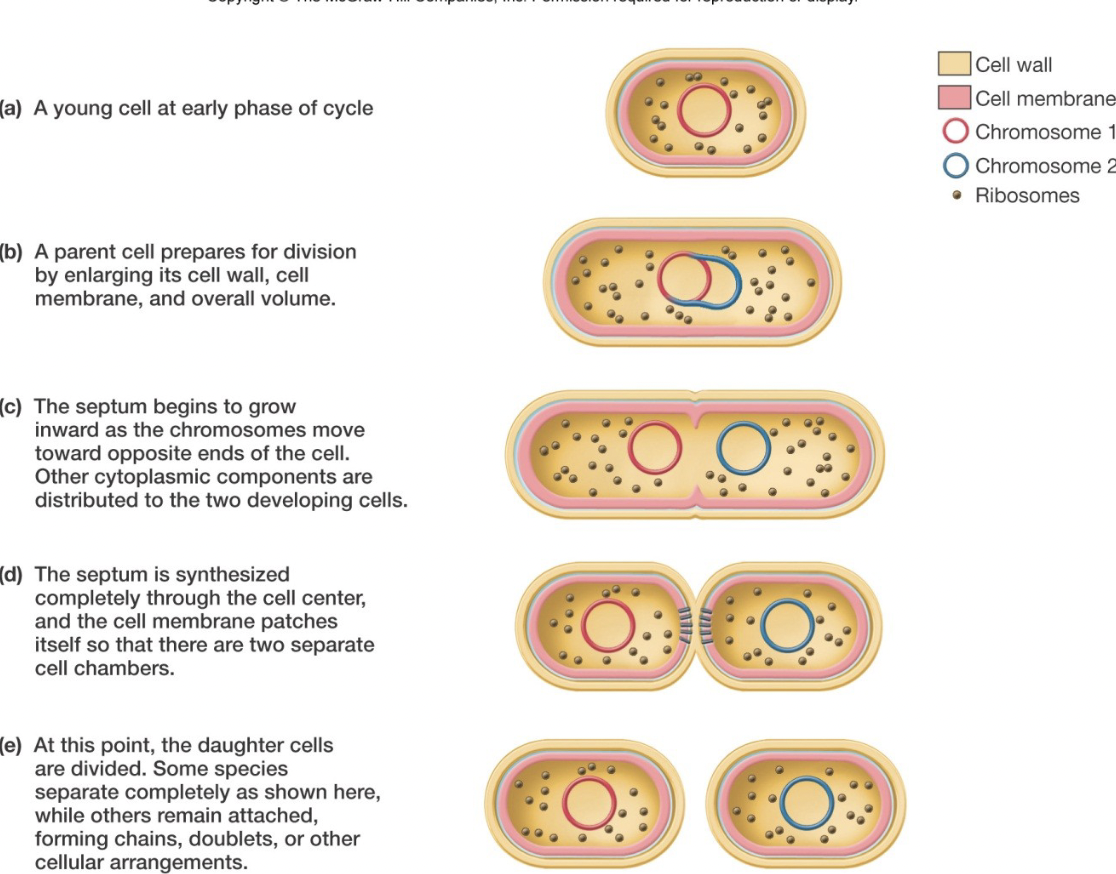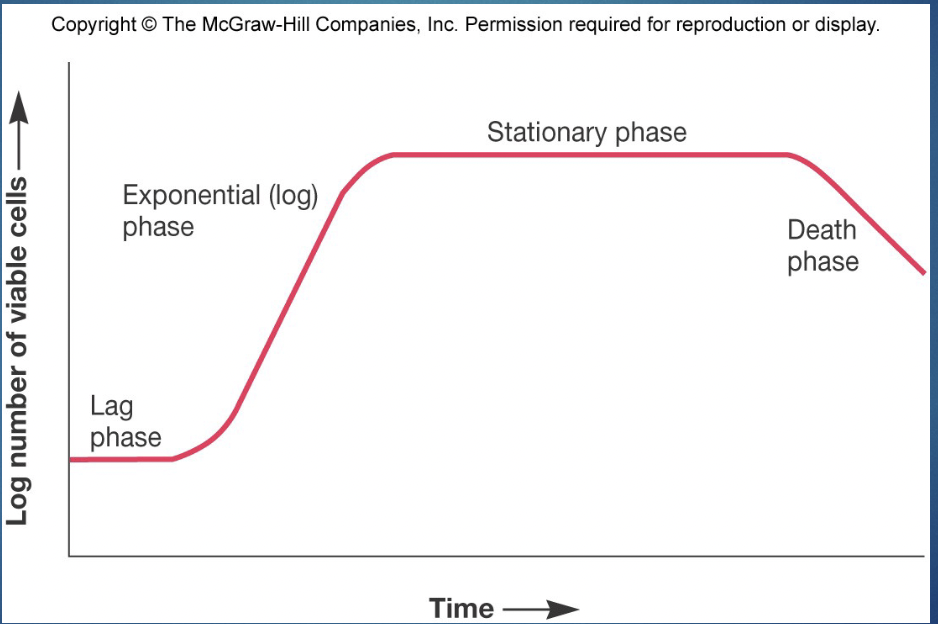Microbiology test 2 - Dr. Collins
1/131
There's no tags or description
Looks like no tags are added yet.
Name | Mastery | Learn | Test | Matching | Spaced |
|---|
No study sessions yet.
132 Terms
Macronutrients
C, O, H, N, S, P (found in organic molecules such as proteins, lipids, carbs, and nucleic acids)
K, Ca, Mg, and Fe (cations and serve in variety of roles inc. enzymes, biosynthesis)
Required in relatively large amounts
Micronutrients
Mn, Zn, Co, Mo, Ni, Cu
Required in trace amounts
Often supplied in water or in media components
Serve as enzymes and cofactors
What is the backbone of all organic components present in a cell?
Carbon
Where are hydrogen and oxygen found? (besides water, u stoopid)
They are in organic molecules
What role do electrons play?
They help w/ energy production and reduction of CO2 to form organic molecules
What are the requirements for carbon, hydrogen, and oxygen?
Often satisfied together (carbon source often provides H, O, and electrons)
Heterotrophs
Use organic molecules as carbon sources which often also serve as energy source
Can use a variety of carbon sources
Autotrophs
Use carbon dioxide as their sole or principal carbon source
Must obtain energy from other sources
Growth factors
Organic compounds
Essential cell components that the cell can NOT synthesize
Must be supplied by environment if cell is to survive and reproduce
Classes of growth factors
Amino acids (protein synthesis)
Pruines and pyrimidines (nucleic acid synthesis)
Vitamins (are enzyme cofactors)
Heme
Microbial production of growth factors
microorganisms can synthesize a bunch, on a large scale industrial production (specifically vitamins and stuff)
What are some media components?
Peptones (protein hydrolysates prepared by partial digestion of various protein sources)
Extracts (aqueous extracts, usually of beef or yeast)
Agar (sulfated polysaccharide used to solidify liquid media; most microorganisms cant degrade it)
Selective media
Favor the growth of some microorganisms and inhibit growth of others (see: MacConkey agar - selects for gram negative bacteria)
Differential media
Distinguish between different groups of microorganisms based on their biological characteristics (ex. blood agar - hemolytic v non hemolytic bacteria)
Reproductive strategies for microorganisms
Reproductive strats of eukaryotic microbes = asexual and sexual, haploid or diploid
Bacteria and archea = haploid only, asexual [binary fission, budding, filamentous]. All must replicate and segregate to the genome prior to division
Binary Fission

Bacterial cell cycle
It’s a sequence of events from formation of new cell through the next cell division (most bacteria divide by binary fission)
What are the two pathways that function during bacterial cell cycle?
DNA replication and partition
Cytokinesis
What’s the shape of most bacterial chromosomes?
Circular
Whats the chromosome “terminus”?
The site at which replication is terminated, it’s located opposite of the origin
What’s the chromosome “single origin of replication”?
Site at which replication begins
What’s the chromosome “replisome”?
Group of proteins needed for DNA synthesis
Cellular growth
Increase in cellular constituents that may result in:
-Increase in cell NUMBER
-increase in cell SIZE
Bacterial growth
Population growth (NOT growth of indvidual cells)
What is the growth curve?
Observed when microorganisms are cultivated in batch culture
Usually plotted as logarithm of cell number v time
What are the 4 distinct phases of a growth curve?
Lag, exponential, stationary, senescence (death)
What does a growth curve look like?

Lag phase of growth
Cell synthesizing new components (to replenish spent materials or to adapt to new medium)
Varies in length (can even be absent)
Exponential phase (or log phase) of growth
Rate of growth and division is constant and maximal (balanced growth, cellular constituents manufactured at constant rates relative to eachother)
Population is most uniform in terms of chemical and physical properties during this time
Whats unbalanced growth?
When the rates of synthesis of cell components vary relative to eachother
Can occur when there’s a change in nutrient levels or environmental conditions
Stationary phase in cell growth
Active cells stop reproducing or reproductive rate is balanced by death rate so total number of viable cells remains constant
What are possible reasons for stationary phase?
Nutrient limitation
Limited oxygen availability
Toxic waste accumulation
Critical population density reached
Senescence (death) phase
Two alternative hypotheses
-Cells are Viable But Not Culturable (VBNC) [cells alive, but dormant, capable of new growth when conditions are right]
-Programmed cell death [fraction of the population genetically programmed to die]
What happens if there’s a prolonged decline in cell growth?
Bacterial population continually adapts
Process marked by successive waves of genetically distinct variants
Natural selection occurs
What is generation (doubling) time?
How long it takes for a population to double in size
Varies on the specific microorganism
Can be anywhere from 10 mins to several days
Extremophiles
Organisms that grow under harsh conditions that would kill most other organisms
Hypotonic solution
Lower osmotic concentration (lots of h2o, not a lot of solutes)
-Water enters the cell
-Cell walls may burst
Hypertonic solution
Higher osmotic concentration (not a lot of h2o, high solutes tho)
-Water leaves the cell
-Membrane shrinks from the cell wall (plasmolysis)
Halophiles
grow best at solutions with >.2M NaCl
Extreme Halophiles
Grow best at NaCl concentrations of >2M
Cell wall, proteins, and plasma membrane NEED high salt to maintain stability and activity
pH
Measure of the relative acidity of a solution
-log (H+ concentration)
Acidophiles
Growth optimum between pH 0 and pH 5.5
Neutrophiles
Growth optimal between pH 5.5 and pH 7
Alkalophiles
Growth optimum between pH 8.5 and 11.5
What pH do most microbes have?
They maintain an internal pH close to neutrality
What’s the cell’s acidic tolerance response?
Pump protons out of the cell
Some synthesize acid and head shock proteins that protect proteins
How do most microorganisms change the pH of their habitat?
They pump out acidic or basic waste products
Can microbes regulate their own temp?
No, they cannot regulate it
Do enzymes have an optimal temp at which they function best?
Yes, they do have an optimal temp
Psychrophiles
0°C-20°C
Psychrotrophs
0°C-35°C
Mesophiles
20°C-45°C
Thermophiles
55°C - 85°C
Hyperthermophiles
85°C-113°C
Aerobe
Grows in the presence of atmospheric oxygen (20% O2)
Obligate aerobe
Requires O2
Anaerobe
Grows in the absence of O2
Obligate anaerobe
killed in the presence of O2
Microaerophiles
Requires 2-10% O2
Facultative anaerobes
Don’t NEED O2, but grow best w/ it
Aerotolerant anaerobes
Grow with or without O2
What’s the basis for different oxygen sensitivities?
Oxygen easily reduced to toxic reactive oxygen species (ROS)
-Superoxide ratical (O2-)
-Hydrogen peroxide (H2O2)
-Hydroxyl radical (HO)
Aerobes produce protective enzymes
-Superoxide Dismutase (SOD)
-catalase
-peroxidase
All strict anaerobic microorganisms lack or have very low quantities of
Suerpoxide dismutase (SOD)
Catalase
These microbes cannot tolerate O2, and must be grown without O2
Barotolerant
Adversely affected by increased pressure, but not as severely as nontolerant oraganisms
Barophilic (peizophilic) organisms
Require or grow more rapidly in the presence of increased pressure
Change membrane fatty acids to adapt to high pressures
Microbial environments are
complex, constantly changing, often contain low nutrient concentrations and may expose a microorganism to overlapping gradients of nutrients and environmental factors
How do most microbes grow best?
Attached to surfaces (sessile) as opposed to free floating (planktonic)
How do microorganims in a biofilm communicate with eachother?
They send “words” (quorum) to eachother via ____
What’s a mature biofilm?
A complex, dynamic community of microorganisms
What’s heterogeneity?
Differences in metabolic activity and locations of microbes
How do biofilms form?
Microbes reversibly attach to conditioned surface and release polysaccharides, proteins, and DNA to form the extracellular polymeric substance (EPS)
Additional polymers are produced as microbes reproduce and biofilm matures
What does the EPS protect the microbes from?
It protects them from harmful agents like UV light, antibiotics, and antimicrobials
Can biofilms form on medical devices? if so, is it bad?
Yes they can, yes its very bad when its on an implant or something
Cell to cell communication w/ gram positive cells
Produce small proteins that increase in concentration as microbes replicate and convert a microbe to a competent state
DNA uptake occurs, bacteriocins are released
Ex. S. Pneumoniae
Cell to cell communication w/ gram negative cells
AHL is an autoinducer molecule produced by many gram negative organisms
It diffuses across the plasma membrane, and once inside the cell it induces expression of target genes that regulate a variety of functions
Vibrio Cholerae
Gram negative
curved-rod shape
1 or more flagella
quorum-sensing
Growth conditions for vibrio cholerae
Facultative anaerobe (Don’t NEED O2, but grow best w/ it)
Marine and estuarine environments
Intestinal contents of plankton of fresh, brackish, and salt water
How is cholera transmitted?
From person to person
Ingestion of contaminated food or water (bathing, playing, and related activities in water contaminated by sewage)
How much bacteria of vibrio cholrae will cause cholera in a healthy person?
10^6 bacteria
What people are more susceptible to getting cholera?
People with type O blood
People with type A are more susceptible than type B, but less than O
People w/ a weakened immune system
People w/ decreased gastric ability
the malnourished
What blood type is the least susceptible to Cholera?
type AB
Where do vibrio cholerae multiply?
In the mucosal surface of the small intestine, where they produce a toxin “choleragen”
What does the toxin “choleragen”, produced by vibrio cholerae, do?
Releases fluids and electrolytes into the intestinal lumen
In several hours to 3 days, explosive, watery diarrhea with vomiting and abdominal pain
How is cholera diagnosed?
Stool and swab samples in acute stage of the disease
Direct microscopy unreliable
How is cholera treated?
Water and electrolyte replacement (oral rehydration effective and safe, intravenous rehydration in severe cases)
Antibiotic therapy
How is cholera prevented?
Sanitation practices (advance water treatment and sanitation systems)
Vaccine (used outside US, short lived in efficacy, and not recommended by the CDC)
What are the two parts of cell metabolism?
Catabolism and anabolism
Catabolic pathways…
…break down macromolecules into simple component parts, releasing energy in the process
Anabolic pathways…
…build up macromolecules by combining simpler molecules, using energy in the process
Catabolistic reactions are also called
Fueling or energy-conserving reactions
What do catabolistic reactions offer?
Provide ready source or reducing power (electrons)
Generate precursors for biosynthesis
What do anabolic reactions offer?
The synthesis of complex organic molecules from simpler ones
Require energy from fueling reactions (catabolic reactions)
What are the 3 types of work in a microbial cell?
Chemical work
Transport work
Mechanical work
What is chemical work in a microbial cell?
Synthesis of complex molecules
What is transport work in a microbial cell?
Take up of nutrients, elimination of wastes, and maintenance of ion balances
What is mechanical work in a microbial cell?
Cell motility (movement) and movement of structures within cells
How do microorganisms get nitrogen from environment?
They can decompose protein material
Some bacteria use NH4+ or NO3– to get N from organic material
A few bacteria use N2 in nitrogen fixation
Exergonic Reaction
Reaction happens spontaneously
If A+B ⇌ C+D, then
Keq = [C][D] / [A][B] > 1.0
Endogonic Reaction
Reaction does not happen spontaneously
If A+B ⇌ C+D, then
Keq = [C][D] / [A][B] < 1.0
What, out of glycolysis, the krebs cycle, or the ETC, makes the most ATP?
The ETC makes the most ATP, and specifically oxidative phosphorylation